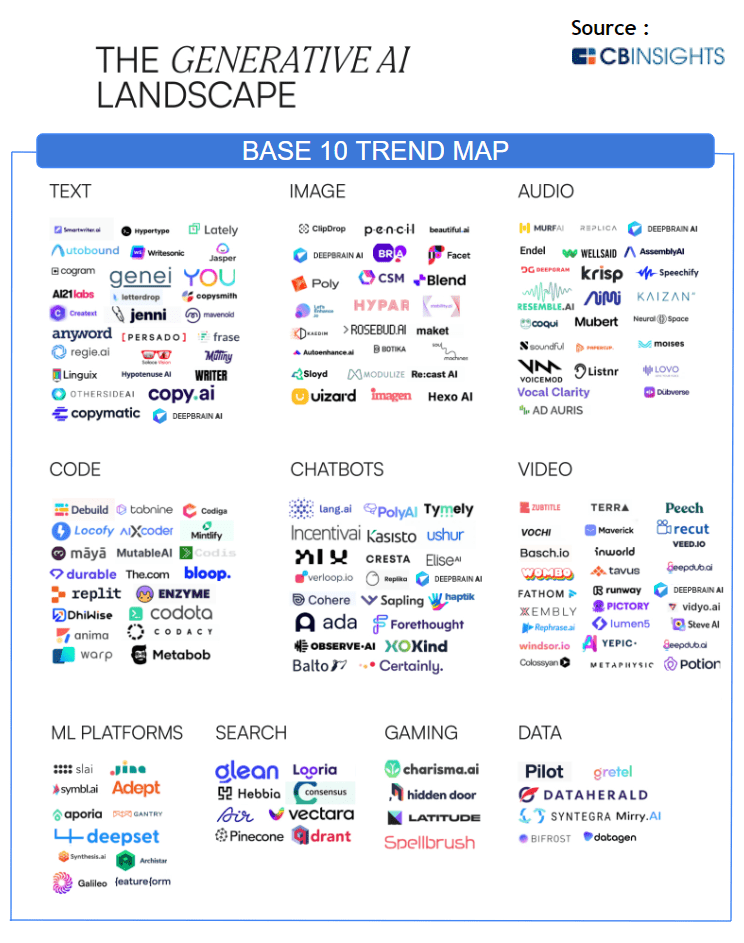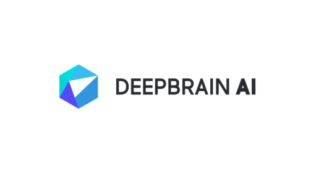AI-powered video production is changing the way we create videos. It uses artificial intelligence to automate much of the video-making process, making it faster and more accessible for everyone. This is a big deal in the world of content creation, especially for those who might not have a lot of technical skills or big budgets.
Text-to-video technology is at the heart of this revolution. This tech takes written text and transforms it into engaging, professional-quality videos. Imagine typing out your script and, within minutes, having a polished video ready to go. It’s making video production easier and more efficient than ever before.
To understand how far we’ve come, it helps to look back at the history of video production. Not long ago, creating a video meant needing expensive equipment, a team of experts, and a lot of time. Now, thanks to advances in AI, many of these barriers have come down. Innovations in machine learning and natural language processing have made it possible to turn text into video quickly and affordably.
In this section, we’ll delve into how AI-powered video production works, the tech behind it, and why it’s important. By the end, you’ll have a solid grasp of this transformative technology and its potential for democratizing content creation.

The Rise of Text-to-Video Technology
Text-to-video technology hasn’t appeared out of nowhere. This evolution stems from the desire to simplify and accelerate video creation. Traditional video production is labor-intensive and expensive, often out of reach for small businesses and individual creators. Innovations in AI have bridged this gap, paving the way for a new era of automated video production.
The market for text-to-video tech has experienced rapid growth. Statistics reveal increasing adoption rates across various industries. From marketing and education to social media, more and more fields are turning to AI-powered solutions to keep up with the demand for video content. Early adopters find that automating even parts of their video production process can save time and reduce costs significantly.
A few key players dominate the text-to-video landscape. Companies like Wibbitz, Lumen5, and InVideo are leading the charge with user-friendly platforms that make it easy to generate videos from text. These platforms leverage sophisticated algorithms and machine learning to deliver high-quality results with minimal user input.
As this technology advances, it’s becoming more intuitive and accessible. AI-driven interfaces and drag-and-drop functionality mean you don’t need to be an expert to start producing quality videos quickly. This democratization of video production tools is empowering a broader range of people to share their stories and ideas in new and dynamic ways.

Democratizing Content Creation: Accessibility and Affordability
AI-powered video production is making content creation more accessible and affordable. Traditional methods require expensive equipment, skilled professionals, and a lot of time. With text-to-video technology, these barriers are significantly reduced. Anyone with a computer and an internet connection can produce high-quality videos without a massive investment.
For novice creators and small businesses, this is a game-changer. You no longer need to hire a video production team or invest in costly software. Platforms offering text-to-video services come with a variety of templates and tools that simplify the process. You can focus more on your message and less on the technical details.
The cost-effectiveness of text-to-video tech is another big draw. Creating videos through traditional means can break the bank, but AI-driven solutions are usually subscription-based or offer pay-per-use models that are much easier on the budget. This opens the door for small businesses to compete with larger companies in the digital space.
A few real-world examples show just how transformative this technology can be. Consider a small local bakery that wants to promote its new menu items. Using text-to-video, the bakery can quickly create engaging promotional videos to share across social media. There’s no need for expensive consultations or a marketing team—just some creative ideas and a bit of text.
Furthermore, educational institutions are leveraging this technology to produce learning materials that are both effective and engaging. Students and teachers can generate instructional videos with ease, enhancing the learning experience without requiring extensive technical know-how or resources.
AI-powered video production levels the playing field, allowing voices from all walks of life to be heard. This democratization means that more diverse perspectives can be shared, enriching the tapestry of online content.

How Text-to-Video Technology Works
Creating videos from text might seem like magic, but it’s all about leveraging advanced tech. The process starts with the user inputting their text content, which can be anything from a script, blog post, or even a series of bullet points. The AI then takes over, analyzing the text to understand its context and key points.
Natural language processing (NLP) is a critical component here. NLP allows the AI to parse through the text, recognizing important phrases and determining the appropriate tone and style for the video. This ensures that the final product is cohesive and conveys the intended message accurately.
The transformation from text to video involves several stages. Once the text is analyzed, the AI selects relevant visual elements such as images, video clips, and animations that match the content. These elements are often pulled from vast libraries of media. Some platforms allow users to upload their own visuals for greater customization.
Voiceovers are another important feature. AI can generate voiceovers that sync with the visuals, ensuring that the narration matches the pacing and mood of the video. Users can often choose from a variety of voices and languages, making the content more accessible to a global audience.
Editing and fine-tuning are simplified through user-friendly interfaces. Most platforms offer drag-and-drop functionality, allowing creators to easily rearrange clips, add text overlays, and apply transitions. The AI makes suggestions based on best practices, but users have the freedom to customize as they see fit.
The final step involves rendering the video, where the AI compiles the elements into a cohesive, polished product. Depending on the length and complexity of the video, this can take anywhere from a few minutes to an hour. Once rendered, the video is ready to be shared across various platforms and formats.
Understanding how text-to-video technology works demystifies the process and helps you see its potential. Anyone can quickly learn to navigate these tools, making video creation a more approachable endeavor no matter your skill level.

Benefits of AI in Video Production
AI-powered video production offers a range of benefits that traditional methods struggle to match. One of the biggest advantages is speed. AI can process text and convert it into a complete video in a fraction of the time it would take a human editor. This efficiency allows creators to produce more content in less time, keeping up with the fast-paced demands of digital media.
Another benefit is the boost to creativity. AI-driven platforms come with a multitude of templates, design elements, and suggestions. This means you can experiment with different styles and formats without needing an extensive design background. The AI can provide creative ideas you might not have considered, helping you craft more engaging and visually appealing videos.
Scalability is another key advantage. Whether you’re a solo creator or part of a large organization, AI-powered tools can scale to meet your needs. For businesses, this means being able to produce a high volume of content without a proportional increase in costs. For individual creators, it means having the capability to output professional-quality videos consistently.
Moreover, AI makes personalization easier. You can tailor videos to specific audiences or platforms with minimal effort. For example, creating different versions of a video for various social media platforms ensures that the content is optimized for each channel’s unique requirements. This level of customization was often too time-consuming and costly using traditional methods.
Enhanced accessibility is also significant. The user-friendly nature of AI video production tools means that people with little to no technical expertise can still produce high-quality content. This opens the door for a wider range of voices and perspectives to join the conversation, enriching the digital landscape.
Lastly, the cost-effectiveness of AI can’t be overlooked. Traditional video production often requires substantial budgets, but AI tools are generally more affordable. This makes high-quality video production accessible to smaller businesses and independent creators who may have been priced out of this medium before.
Challenges and Considerations
Despite the many advantages, AI-powered video production is not without its challenges. One of the main concerns is quality control. While AI is remarkably effective, it can sometimes miss the nuances that a human editor would catch. This means there can be instances where the video doesn’t quite hit the mark in terms of tone or content accuracy.
Ethical issues are another important consideration. The ease of creating realistic videos opens up possibilities for misuse, such as disseminating misinformation or deepfakes. As with any powerful technology, it’s crucial to use it responsibly and to be aware of the potential for abuse.
Balancing automation with creative authenticity is equally challenging. While AI tools can handle many tasks, they shouldn’t replace the unique human touch that makes content truly engaging. Creators need to find a balance between leveraging AI for efficiency and adding their own creative input to maintain authenticity and originality.
Data privacy is another area of concern. AI platforms often require access to a lot of data to function effectively. Users need to be mindful of the information they’re sharing and ensure that platforms are compliant with data protection regulations.
Additionally, there can be a learning curve associated with these new technologies. While many platforms are designed to be user-friendly, there still might be a period of adjustment as users get accustomed to the new workflows and functionalities. This gap can be bridged through training and practice, but it’s worth noting for anyone considering adopting these tools.
Even with these challenges, the potential benefits of AI in video production are too significant to ignore. By addressing these considerations head-on, creators can make the most of this technology while mitigating the risks.

Real-World Applications of Text-to-Video
AI-driven text-to-video technology is already making waves in various fields, proving its versatility and broad appeal. One prominent area where this technology is gaining traction is education. Teachers and educational content creators are using AI to transform lesson plans and textbook materials into engaging video content. This makes learning more dynamic and accessible, especially in a digital-first world.
Marketing and advertising professionals are also turning to text-to-video tools to craft compelling campaigns. The ability to quickly generate eye-catching videos from written copy allows for more agile marketing strategies. Brands can produce tailored content for different target audiences, adapting quickly to market trends and consumer behaviors.
Another intriguing application is in social media. Influencers and content creators are using text-to-video platforms to produce consistent, high-quality posts without the need for a full production team. This not only saves time but also helps maintain a steady flow of engaging content, crucial for building and retaining an online following.
Corporate communications benefit significantly from this technology as well. Companies are able to streamline internal training videos, onboarding materials, and company updates. The efficiency and ease of use make it simpler to keep employees informed and engaged.
E-commerce is another sector reaping the benefits. Online retailers are using AI to create product demo videos and promotional content from product descriptions. This enhances the customer experience by providing a richer, more informative way to showcase products.
Public sector organizations are also tapping into text-to-video technology for public service announcements and informational videos. This enables them to disseminate important information quickly and widely, reaching a broader audience with minimal resources.
These real-world applications highlight the transformative potential of AI-powered video production across different industries. As more fields begin to explore and adopt this technology, its impact will only continue to grow.

The Future of AI-Powered Video Production
AI-powered video technology is not just a fleeting trend. It’s set to evolve, bringing even more advanced and user-friendly features to the table. Predictive analytics will likely become a major player, allowing creators to understand what types of content will resonate best with their audience before even starting the production process. This can lead to more effective and targeted videos, maximizing engagement and impact.
Augmented reality (AR) and virtual reality (VR) are other exciting frontiers. Imagine being able to create immersive video experiences directly from text. As AR and VR technologies become more integrated with AI, the possibilities for interactive and engaging content are virtually limitless. These advancements will provide a richer, more immersive viewer experience, further blurring the lines between digital content and real-life interaction.
Automation will continue to advance, reducing the need for human intervention in even more complex tasks. This could include everything from automated editing and sound design to personalized video narratives tailored to individual viewers. Such innovations will make high-quality video production even more accessible and efficient.
The integration of multi-modal AI systems is another area to watch. Combining text, audio, and visual data will enable even more sophisticated video outputs. For instance, AI could analyze a written customer review and generate a video complete with voiceover, background music, and relevant visuals, all tailored to the tone and sentiment of the review.
It’s not just about technological advancements, either. The democratization of video production is likely to continue, empowering even more people to share their stories and ideas. As these tools become cheaper and easier to use, we can expect a more diverse range of voices in digital content.
The impact on the video production industry itself will also be profound. Traditional roles may shift, with more emphasis on creative direction and strategy rather than technical execution. This is likely to open up new career opportunities and reshape the skill sets that are in demand.
Looking ahead, the future of AI-powered video production is incredibly promising. The barriers to entry will continue to fall, and the tools will become more powerful and intuitive. This will allow for even greater creativity and innovation, fundamentally changing how we produce and consume video content.
Conclusion and Takeaways
AI-powered video production is revolutionizing the way we create and share content. From its ability to democratize content creation to its efficiency and affordability, this technology is making high-quality video production accessible to everyone.
Text-to-video technology has shown significant benefits across various industries, from education and marketing to e-commerce and corporate communications. The evolution of this tech showcases its potential for making content creation faster, easier, and more dynamic.
Despite some challenges like quality control and ethical concerns, the advantages far outweigh the drawbacks. By leveraging AI responsibly and creatively, we can tap into the full potential of this innovation.
The future holds exciting possibilities, with advancements in predictive analytics, AR and VR integration, and multi-modal AI systems. These developments promise to make video creation even more immersive, personalized, and efficient.
With continuous improvements and increasing accessibility, AI-powered video production is poised to become an indispensable tool in the digital age. Embracing this technology will allow creators of all kinds to produce compelling, impactful content with unprecedented ease.
Revolutionize Your Video Production with AI
Tired of complex video editing and expensive production costs? Say hello to the future of content creation with AI Studios.
Transform your ideas into stunning videos effortlessly.
- Simply type your script
- Choose from a variety of realistic AI avatars
- Watch as AI Studios generates a professional-quality video in minutes
Perfect for:
- Marketing and advertising
- E-learning and training
- Internal communications
- Social media content
- And so much more!
Experience the power of AI-powered video production today.
Try AI Studios for FREE and unlock your creative potential.
#AIvideo #ContentCreation #DeepBrainAI
—
Kevin

